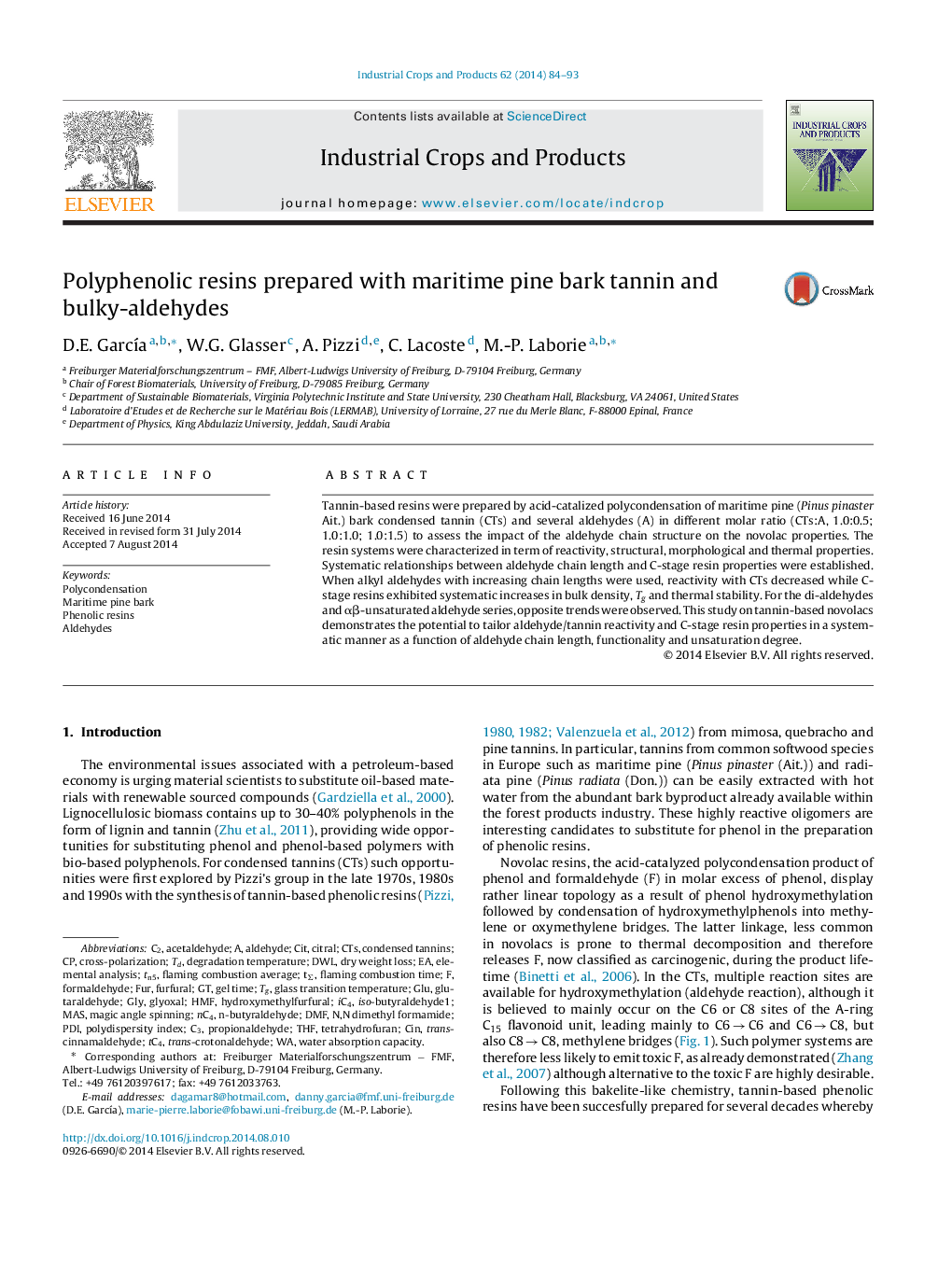| Article ID | Journal | Published Year | Pages | File Type |
|---|---|---|---|---|
| 6376496 | Industrial Crops and Products | 2014 | 10 Pages |
Abstract
Tannin-based resins were prepared by acid-catalized polycondensation of maritime pine (Pinus pinaster Ait.) bark condensed tannin (CTs) and several aldehydes (A) in different molar ratio (CTs:A, 1.0:0.5; 1.0:1.0; 1.0:1.5) to assess the impact of the aldehyde chain structure on the novolac properties. The resin systems were characterized in term of reactivity, structural, morphological and thermal properties. Systematic relationships between aldehyde chain length and C-stage resin properties were established. When alkyl aldehydes with increasing chain lengths were used, reactivity with CTs decreased while C-stage resins exhibited systematic increases in bulk density, Tg and thermal stability. For the di-aldehydes and αβ-unsaturated aldehyde series, opposite trends were observed. This study on tannin-based novolacs demonstrates the potential to tailor aldehyde/tannin reactivity and C-stage resin properties in a systematic manner as a function of aldehyde chain length, functionality and unsaturation degree.
Keywords
Tn5n-ButyraldehydeTC4DMFCITMaritime pine barkHMFDWLTHFCTSPDIAldehydeTrans-cinnamaldehydeAldehydesacetaldehydeMASCondensed tanninsTetrahydrofuranElemental analysisCinFurglass transition temperatureDegradation temperaturePhenolic resinsmagic angle spinningGel timeCitralpolydispersity indexwater absorption capacityFormaldehydeFurfuralCross-polarizationHydroxymethylfurfuralPropionaldehydePolycondensationGluGlutaraldehydeGlyGlyoxal
Related Topics
Life Sciences
Agricultural and Biological Sciences
Agronomy and Crop Science
Authors
D.E. GarcÃa, W.G. Glasser, A. Pizzi, C. Lacoste, M.-P. Laborie,
